I’ve been asked if I’ll be continuing the organic series. The answer is absolutely YES! However, we are going to take a quick break to cover some timely topics for a few weeks and then get back into organic content.
Today, we’re talking about hazelnuts
The week I moved away from Oregon to start my post-college career, my parents and brother bought a boat (we’d never had one). Later that year, the farm planted their first hazelnut orchard. A few years later, the first child in the next generation was born. I moved away and all this fun new stuff happened.
Now that I’m back, I’m getting to experience the things I missed out on. I spent a couple sunny afternoons on the river this summer. I see my niece all the time and am getting to watch her grow and learn. And during the last few weeks, I’ve gotten to watch and participate in hazelnut harvest. Part of the reason I’m so excited about growing hazelnuts is that they are a food crop. Historically, our farm has grown seed crops, mostly grass seed (which you can read about here). It’s super cool, but you don’t eat it. Some of the seed we produce is bought by someone who will then grow it for food (like radishes, turnips, peas, and that one random time we grew bok choy seed), but we don’t do that part. Hazelnuts though, they are for eating.
Hazelnuts are Great and People are Noticing
My first memory of anything hazelnut related was using Nutella at my aunt and uncle’s house as a child. Then I was introduced to Ferrero Rocher and thought they were so fancy and delicious (adult me still thinks they are delicious, and I happen to be eating them while typing this…). It’s no surprise that most of my, and probably your, experience with hazelnuts is Nutella and Ferrero Rocher since, according to this Forbes article, their company purchases one third of the ENTIRE PLANET’S hazelnuts.
A little hazelnut history
Turkey is the world’s number one producer, at about 70%, of all hazelnuts. In 2019, they produced about 800,000 tons of nuts. Oregon produced 44,000. Just for comparison. There are records of hazelnuts in Turkey from thousands of years ago. This has, and likely will, always be a very important crop for their country and economy.
The United States is ranked 4th in the world for hazelnut production. Some sources say that Oregon produces 95-99% of the US hazelnuts and others, like this document from the Oregon Department of Agriculture, say it’s 100%. That means that out of the entire world, Oregon produces the 4th most hazelnuts. It’s wayyyy less than Turkey, but I think that’s pretty stinkin’ cool.
The amount grown in Oregon, and around the world, is increasing pretty quickly. Hazelnuts are becoming more popular and more candy and other food companies are starting to use them in more mainstream products. Similar to other tree nuts, they can be used in savory or sweet recipes and are used in both nutritious and…less than nutritious ways (I’m looking at you, Nutella).
Our farm’s journey into hazelnuts
As the hazelnut market started growing, our family decided to get involved. The first orchard was planted in 2014 (same year I moved away). A few more have been planted since then. Even though I haven’t been here to be a part of the process, it’s been fun to watch my family from a distance as they have learned and innovated.
The first year, they planted with a LOT of manual labor. A couple years later, they built a mechanical planter, from scratch. They’ve built fertilizer equipment, a sweeper, and other odds and ends. They have looked at the way others do it and kept the processes that work and tried to improve areas that need improvement. I’m pretty darn proud of what they’ve done.
How hazelnuts are grown and harvested
Every farm is going to have slightly different practices, and different countries can be vastly different. Hazelnuts are a bush, not a tree, in many places (they naturally grow bush-like, but US producers work to keep them as single trunk trees). Many places harvest them by hand and dry them on basically any flat outdoor space available.
All of these methods are valuable and have their place, based on the environment and culture of the producers. The rest of this is going to be about how my family, and many other Oregon growers, go about the process.
Planting and growing
The trees are planted in beautifully straight rows. No matter what angle you look at the orchard, all you see are straight, evenly spaced rows. It’s so satisfying. The trees take around 4-5 years to fully mature and produce a strong harvest. Nut growers put a lot of money and care into their trees before they ever see a financial return for it.
Hazelnut trees are wind pollinated and growers don’t need to worry about bees, but they do need to make sure they have good pollinator varieties in their orchards. The nuts grow in clumps, each within their own husk.
Nut drop
When the nuts are ripe and ready, they drop to the orchard floor on their own. It seems kind of convenient that they tell you when it’s time. They don’t all fall at once though. Growers will typically go through their orchards twice, a couple of weeks apart, to collect the nuts.
Sweeping
The first step, once the nuts have dropped, is to sweep them up. Different farmers have different types of sweepers. My family built their sweeper. It’s super efficient, but I chuckle when I look at it. It’s…unique. The machine has V shaped arms. The end of each arm has a round brush on it that rotates and sweeps the nuts toward the middle. The arms have rakes on them that help move the nuts toward the middle has well. As the sweeper drives down the row, a straight line of nuts appears behind it.
Harvester
Once the nuts are in rows, the harvester goes next. Ours is pulled behind a tractor. It picks the nuts up off the ground and lifts them into a sort of bin/tank. It also blows air to try to get sticks and dirt and rocks separated from the nuts and blown back into the orchard, instead of ending up in the tank. It’s not perfect and some get through, but it’s much better than nothing.
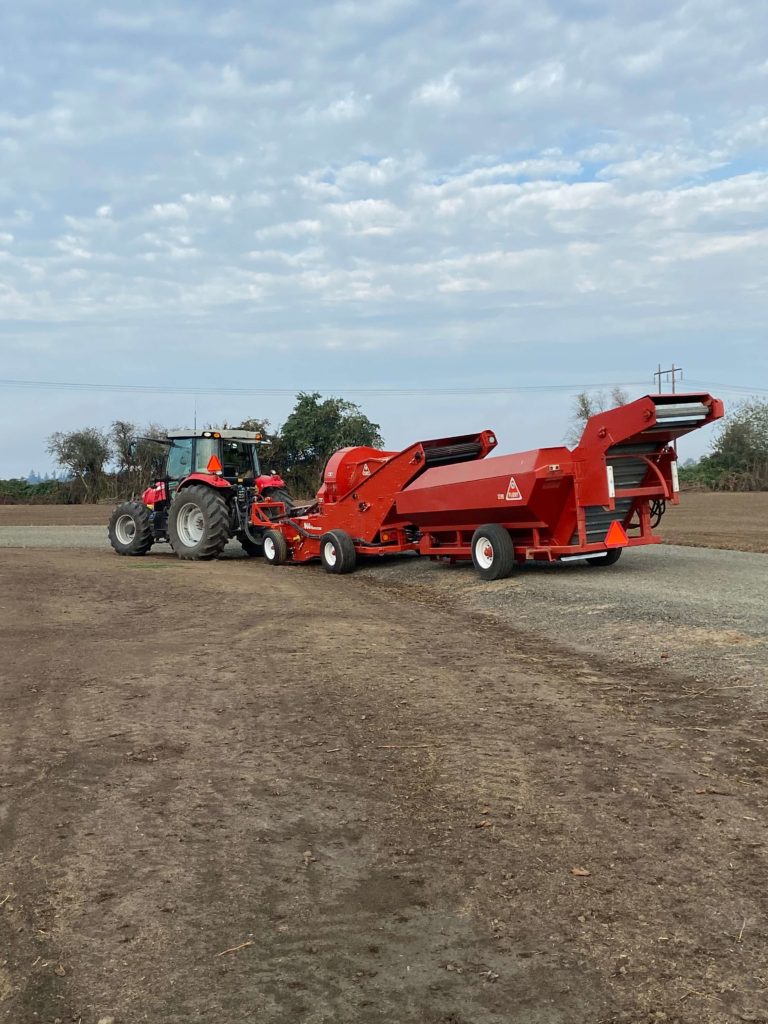
Nut Cart
The nuts get moved from the harvester’s tank to a truck without the harvester ever stopping. A cart drives up behind the harvester and a conveyor moves the nuts to the cart. The driver’s seat, steering wheel, and all controls spin 180 degrees in the cab, so that the cart driver doesn’t have to drive in reverse to the harvester. It’s pretty cool.
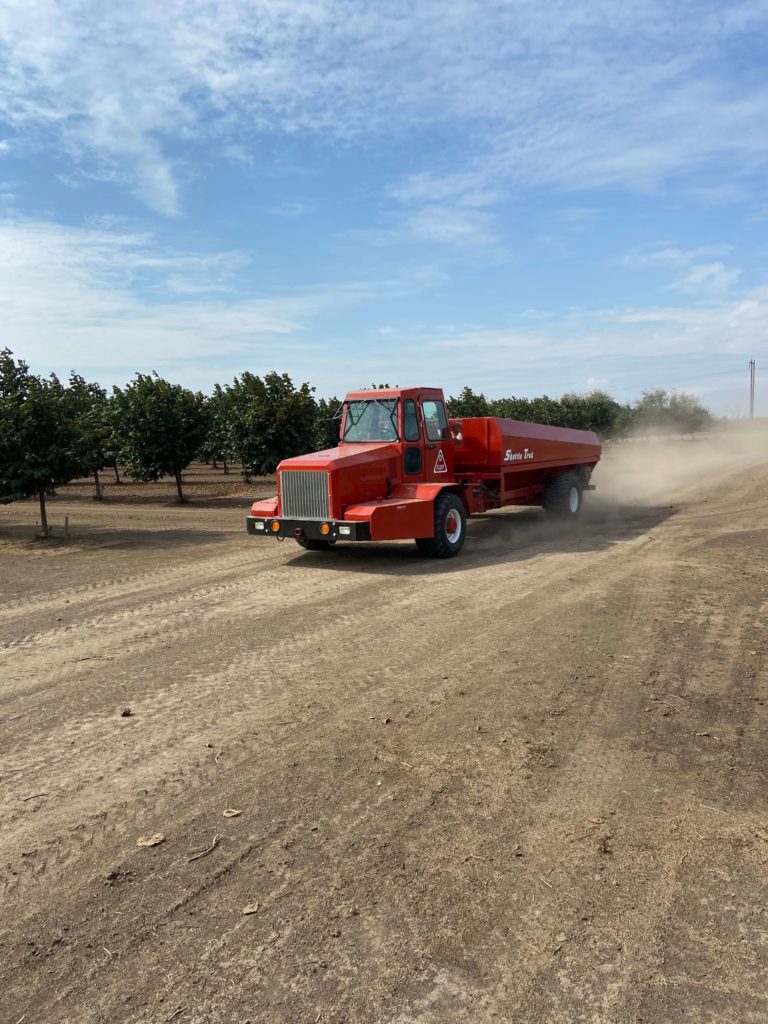
Transfer to truck
The cart driver then takes the nuts to an auger to get them into a truck. The auger acts like an escalator for the nuts and runs them up a pipe and dumps them. Some farmers also use boxes, rather than putting the nuts into a large truck bin.
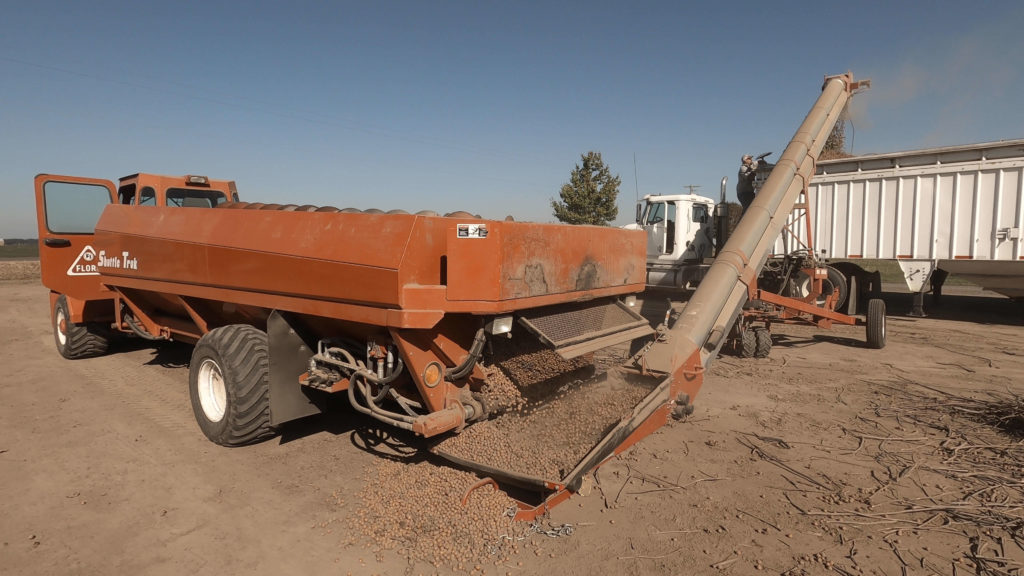
Processing
Farmers do different things with their hazelnuts, depending on their operation and size. Some sell them to a processor, who handles the cleaning and drying of the nuts and then sells them to a food product manufacturer, or restaurant, or wholesaler, etc. Some farmers process and market the nuts themselves. There are a lot of different ways this happens.
Byproduct
All parts of farming have byproduct – the leftover material after harvest. Food and seed crops have stems and vines and such. Hazelnuts have shells. Rather than the shells going to waste, some processing plants sell them as mulch. I’ve been places that use crushed hazelnut shells as garden paths. I love to see uses for byproducts. It’s a sustainable way to use the whole product, rather than just the intended harvest.
Conclusion
Every nation and farmer is going to have slightly different methods. No matter exactly how they do it, it’s going to involve collecting the nuts from the field, drying them, and selling them.
Now, the next time you eat hazelnuts, you can imagine the adventure that each nut took to get to you, and the hands that helped it make the journey.
What’s your favorite way to eat hazelnuts? Let me know in the comments!
Leave a Reply
Food companies often use fear and misconceptions to market their product. Enter your email below and you'll have 5 ways to beat them at their sneaky game.
5 Food Label Secrets to Save Big $$$ at the Grocery Store
oh, yes please
FREE DOWNLOAD
The Olive Branch
Offering first-hand perspective on farming and our food supply
Home
About
consulting
resources
Contact
the blog
Follow along on Instagram
@theolivebranch_j
The olive branch 2024 | design by tonic
ag Tours
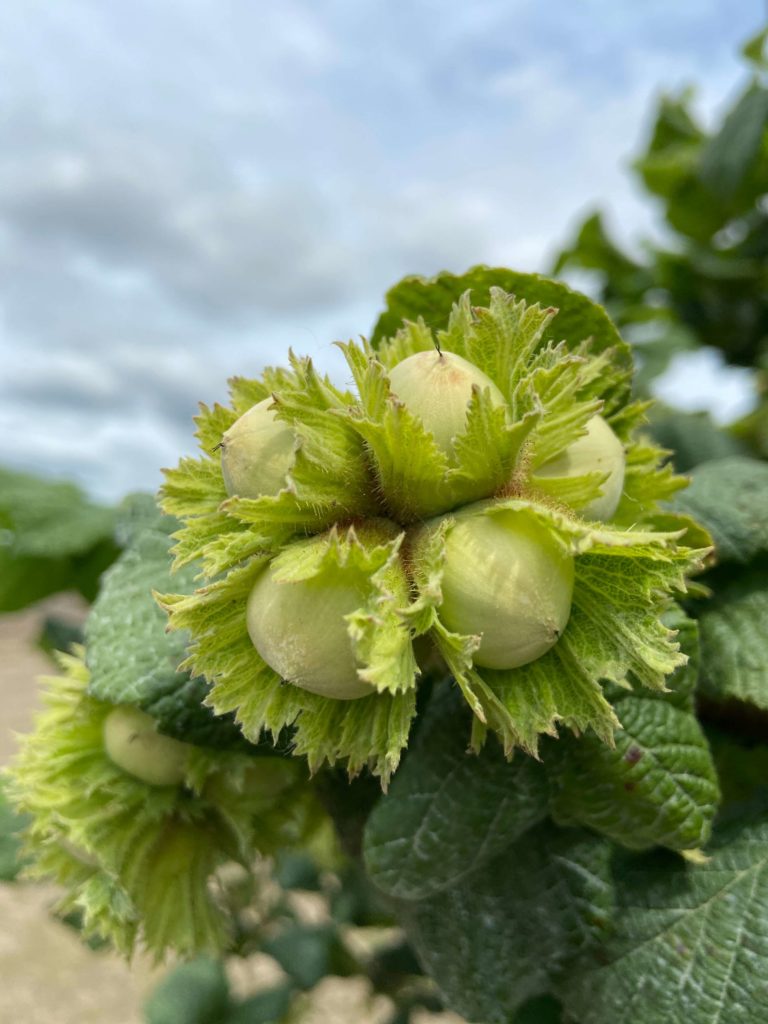
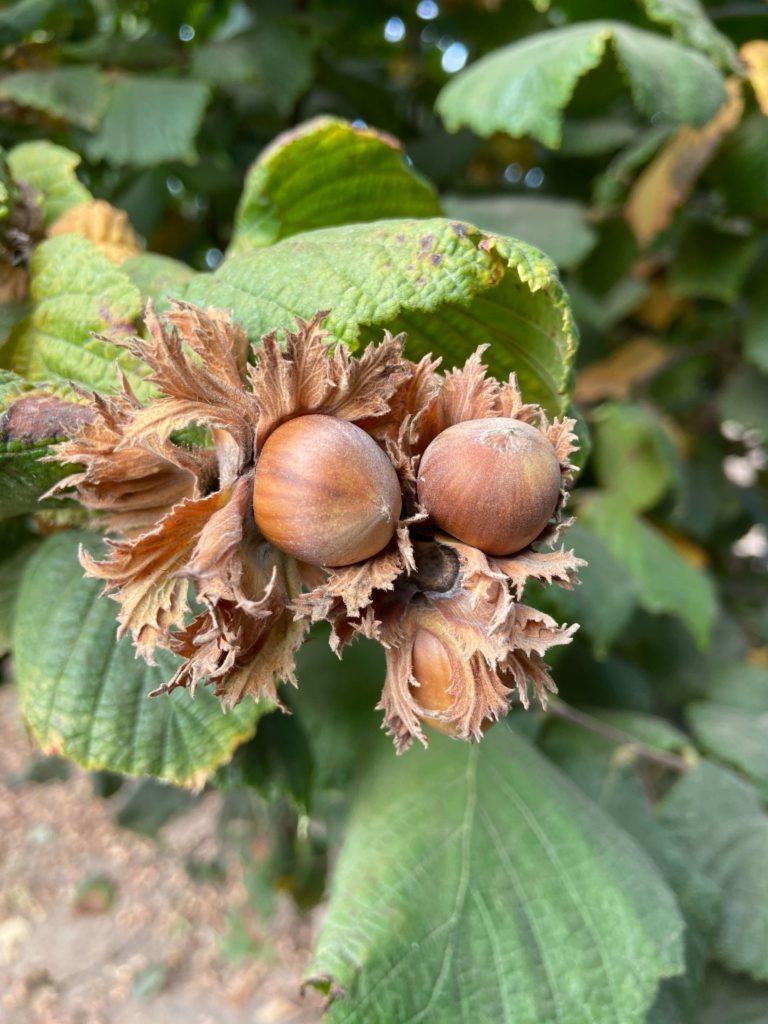
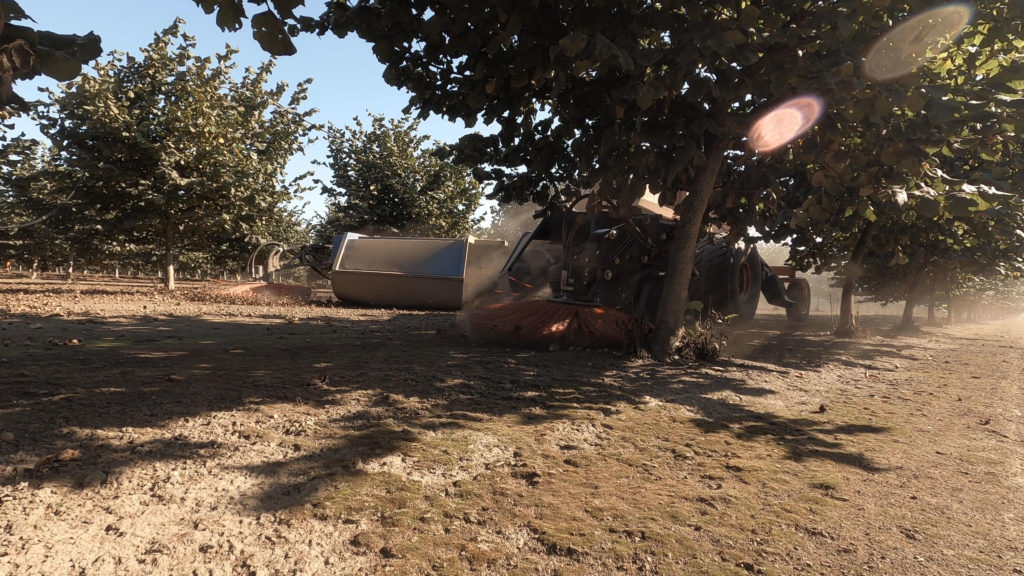

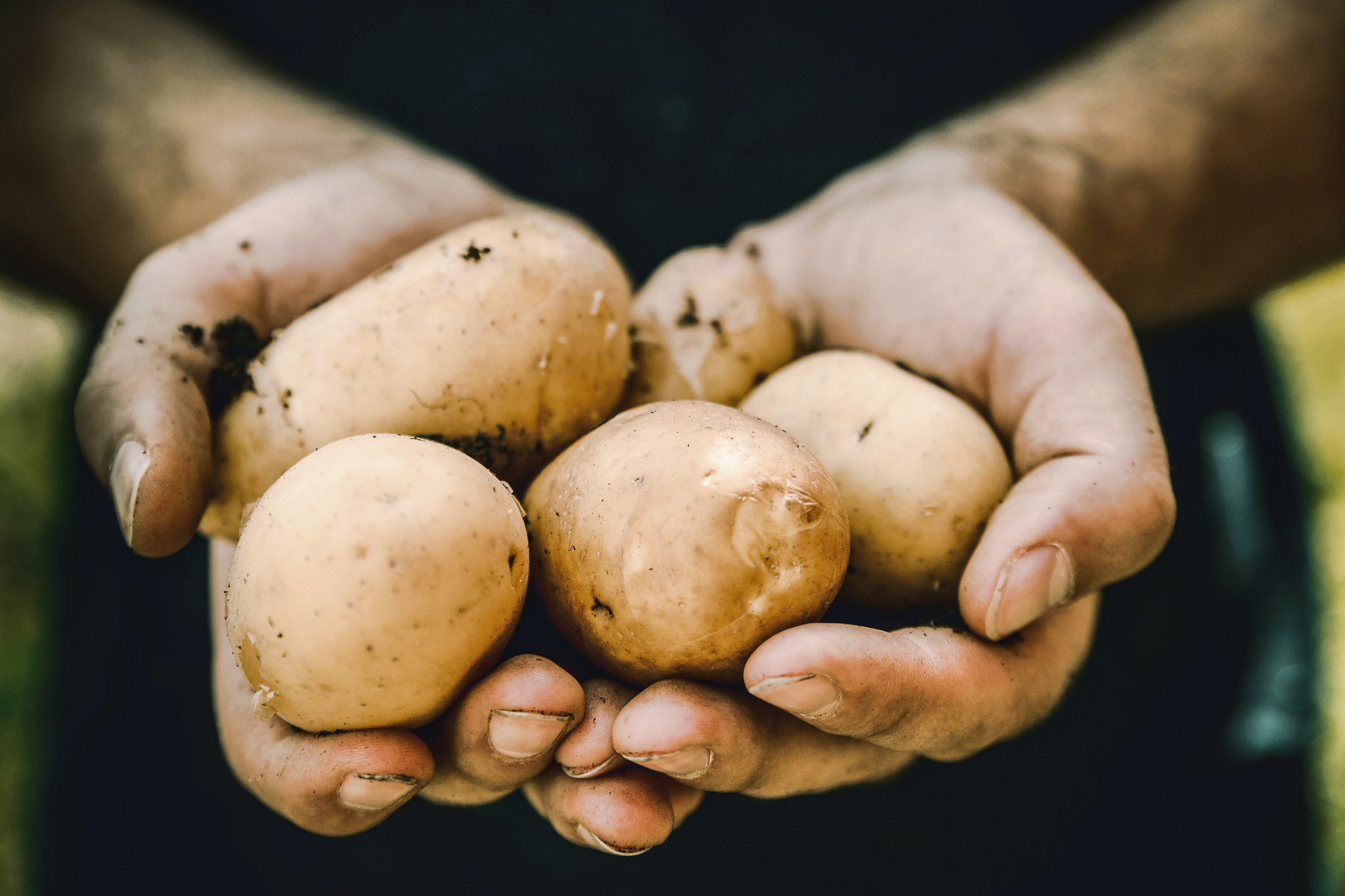

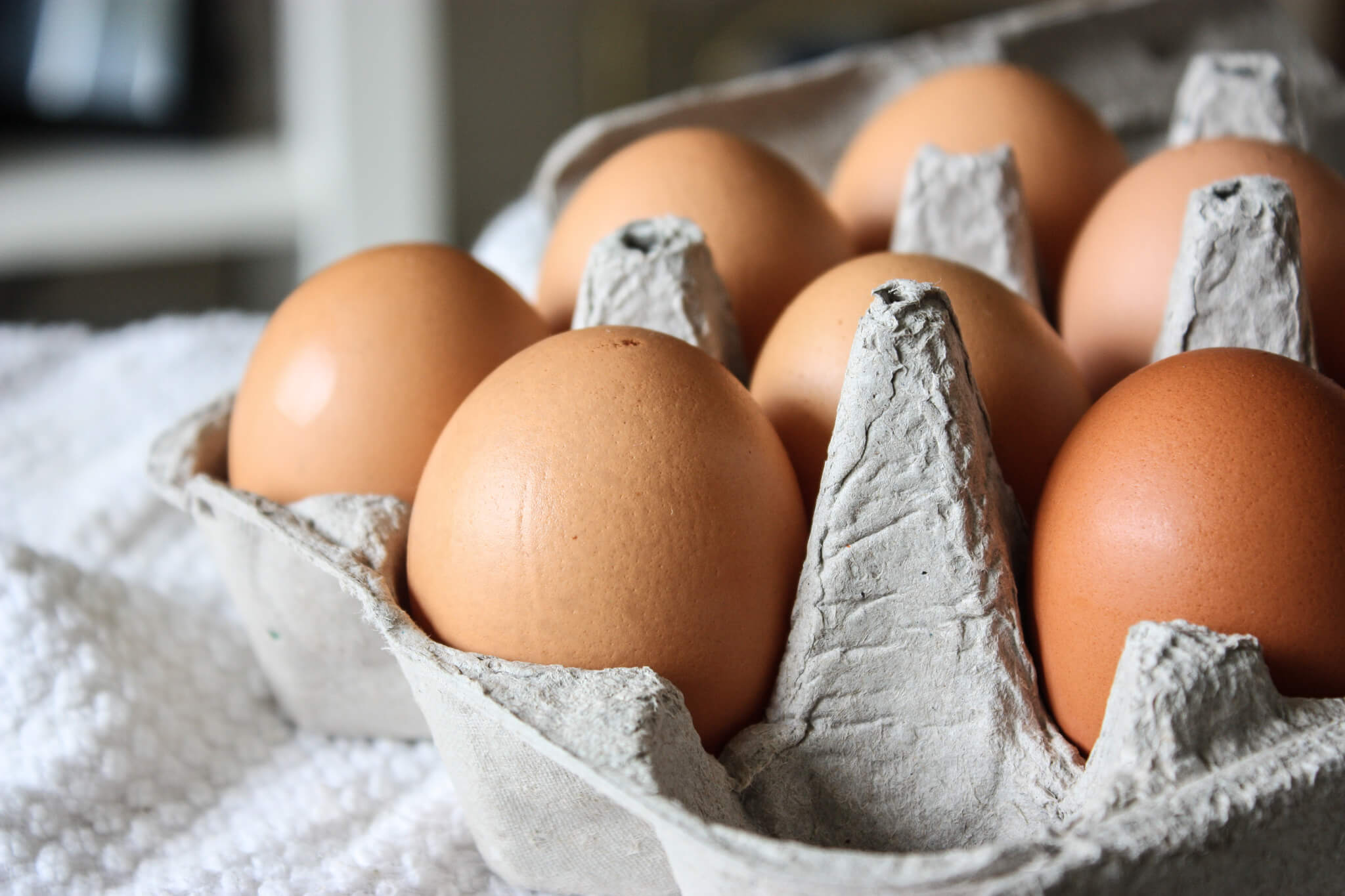
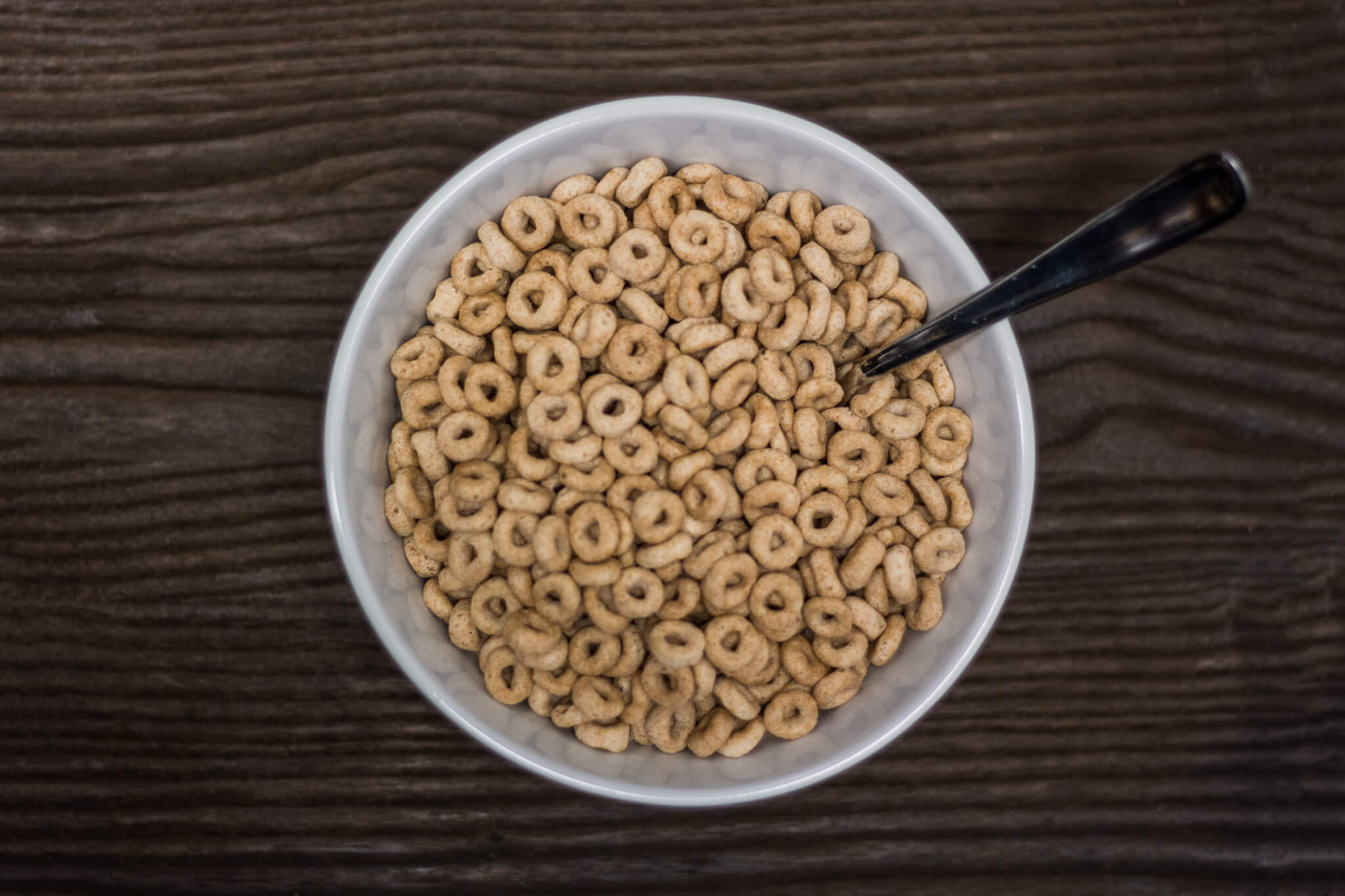

I really liked learning the statistics on how much is grown and where.
Good information.